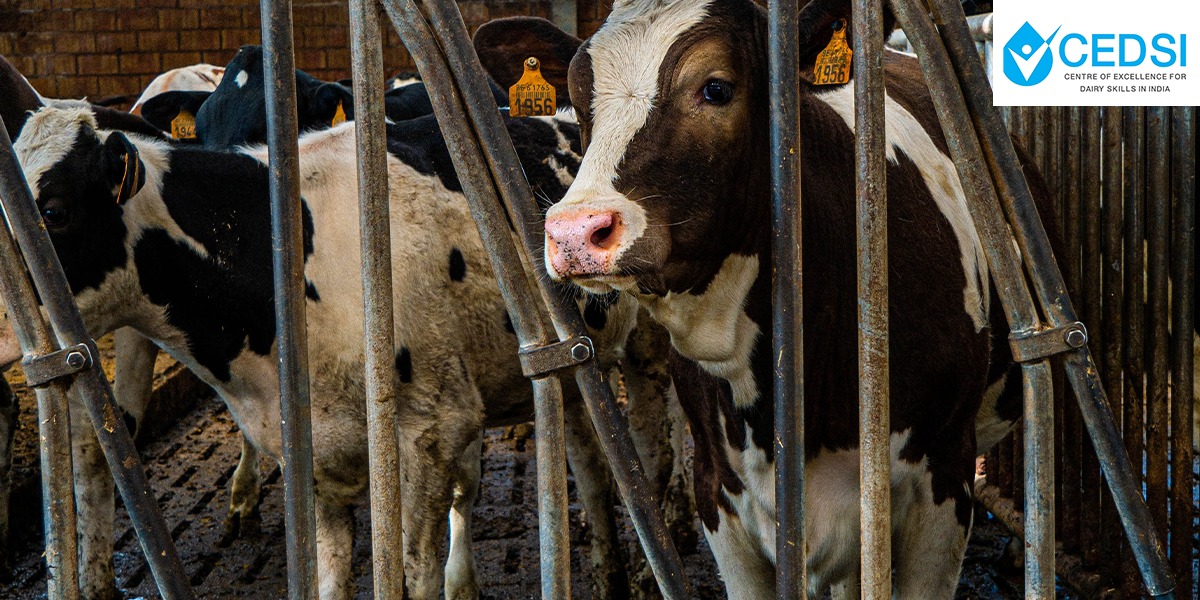Introduction
Artificial Insemination is a method that involves a deliberate introduction of sperm inside a female’s cervix. It helps in achieving pregnancy through in vivo fertilization without any sexual intercourse.
Artificial Insemination or AI has a plethora of benefits, especially to dairy farmers. It provides them access to the best available genetics and helps them in supporting animal health and safety.
AI allows farmers to avail the best bull or male genetics from all across the world. It thus helps them to promote the production, health attributes, fertility and survival rate of their dairy cattle through a balanced approach to breeding.
Current methods used for Artificial Insemination
Artificial Insemination consists of the following methods:

- Collection and Evaluation of Semen:
Various collection methods have been used since the advent of AI. The older ineffective methods have been steadily substituted for better modern techniques. At present, there are three standard methods of semen collection:
- Use of Artificial vagina
- Electro-stimulation method.
- Massaging the ampullae of ductus differences
Use of Artificial Vagina is by far the safest method both for the sire and the collector. Once the semen is collected, it is tested and evaluated for the possible presence of virus and bacteria.
- Preservation of the collected Semen:
The evaluated semen is then frozen and stored. There are two ways of freezing semen-
- using solid carbon dioxide and alcohol below-100 degrees F
- using liquid nitrogen at -320 degrees F.
Liquid nitrogen is better than dry ice because it does not contribute to the deterioration of fertility with age.
Frozen semen can be saved indefinitely if a proper temperature is sustained. Fresh, liquid semen is usually stored for 1 to 4 days at 40 degrees.
- The process of Artificial Insemination:
There are different techniques of Insemination used in different species of animals. The three principal methods used are:
- Speculum method
- Vaginal method
- Rectovaginal method.
Recto Vaginal Method
This is the safe and most reliable method of Insemination. Here a gun stuffed with semen straw is transferred through the vulva of a cow to its vagina and cervix. As soon as the gun enters the cervix, the semen is deposited through injection.
Speculum Method
Here a speculum is set up in the vagina of the animal, and it provides an outside passage for insemination. Then an inseminating pipe is passed through this speculum that deposits semen into the cervix.
Vaginal Method
Here a qualified inseminator passes his hand through the animal’s vagina and deposits the semen through an injection. This method involves a certain degree of risk because it can damage the female genitalia.

Advantages of Artificial Insemination over Natural Service
AI is the most effective tool available to dairy farmers, and it helps them to enhance both their productivity and profitability. There are plenty of advantages of AI over natural mating methods. Some of them are:
- Artificial Insemination boosts the efficiency of bull usage
- It is a cost-effective method
- It prevents transmission of disease germs that occurs during natural mating
- It helps in promoting breeding efficiency
- It is useful in creating a progeny with better genetics for greater profits
Challenges of the current methods used
Although Artificial Insemination is an excellent breeding technique for milch animals, most Indian farmers aren’t aware of it. Thus the current method suffers from the following downfalls:
- It requires well-trained surgeries and special equipment which most rural people cannot afford by themselves.
- It also requires more time than natural breeding techniques
- Improper sanitization can often lead to lower fertility rates
- If the bull used is not healthy, then it can spread genital diseases.
- It requires prior technical knowledge that can only be gained through higher education.
Scope of improvement in the AI methods used in Dairy Farming
Artificial Insemination in Dairy leads to an improvement in animal health. According to statistics, the number of livestock artificial inseminations across India in the fiscal year of 2018 was more than 7 crore. Uttar Pradesh, in India, holds the records for the highest number of Artificial Insemination in Dairy Animals.
Future of Artificial Insemination
The application of AI in livestock will probably continue to increase in future. AI not only promotes more productive and efficient livestock but also leads to the application of several modern breeding techniques. When coupled with other biotechnologies- like cryopreservation, single layer centrifugation, and sperm sex selection- it can significantly enhance the profits of dairy farmers.
Furthermore, sex-sorted semen technology was developed by NDDB that ensures the birth of female calves exclusively. The first female calf was born in October 2020 in Chennai with the help of this technology. Although the sex-sorted semen technology is currently a property of only a few MNCs, various companies are trying to provide the dairy farmers access at a cheaper rate. With this technology, dairy farmers would produce female calves as per requirements that would also boost their financial advantage.
Conclusion
AI has revolutionized animal breeding in recent times. The AI industry has increased dramatically in the last few decades and is now widely used in intensive animal production.


worth reading
This blog is Informative and Covers the Basics of Artificial Insemination Techniques. Good Read.
A perfect summary of Artificial Insemination Techniques in India. Suggested for Dairy Veterinary Students.
Well written worth reading…. 👍👍
Very informative and crisply written
Well written